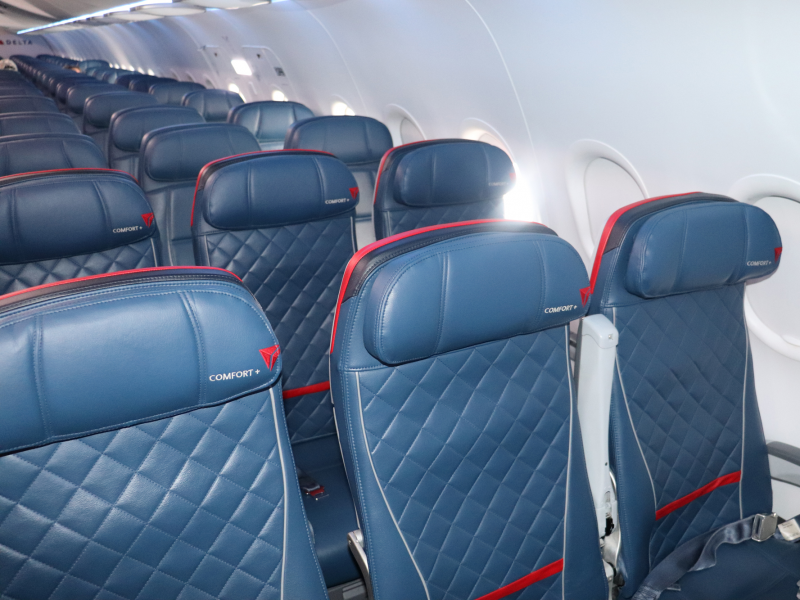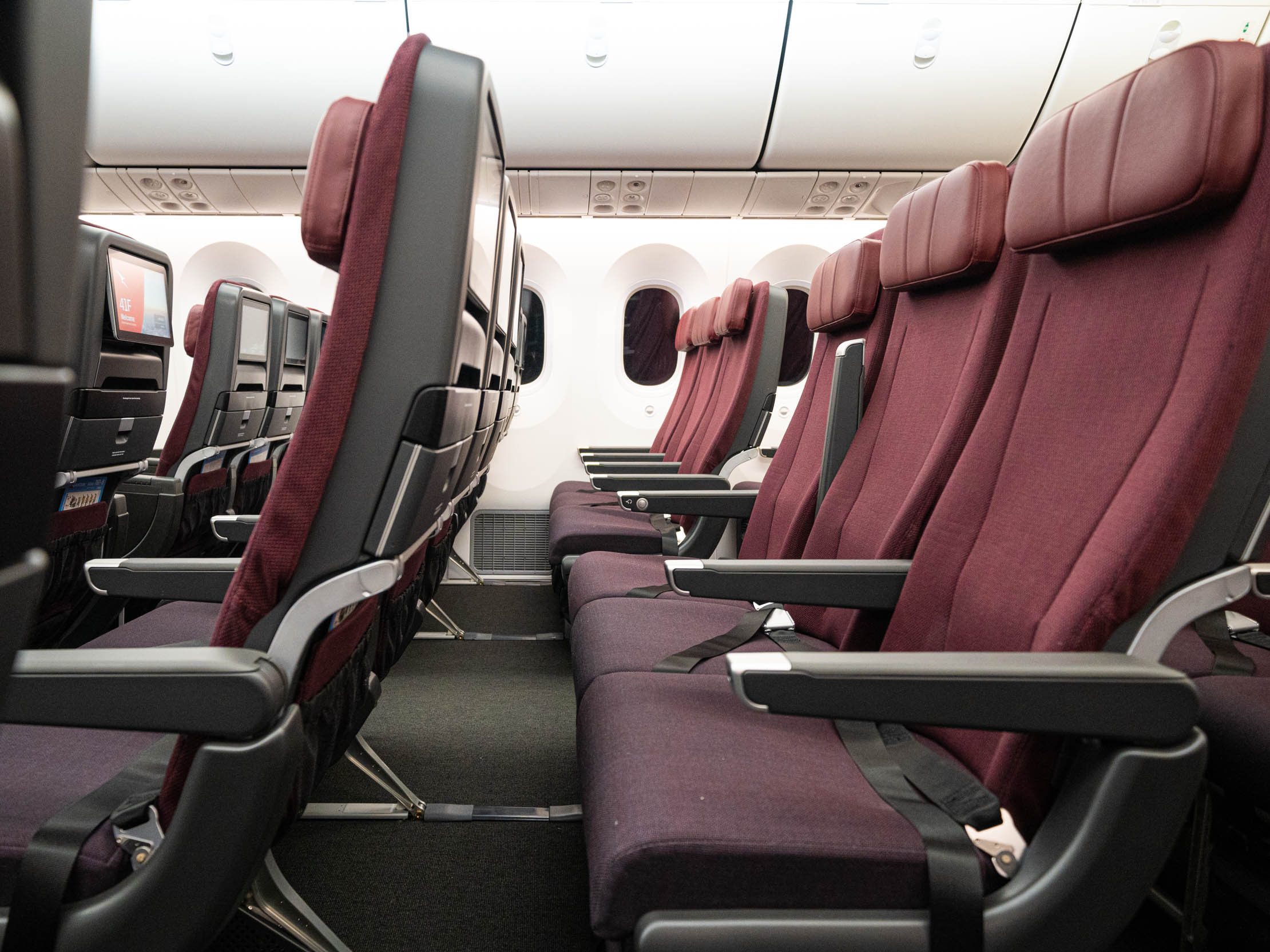- Seat assignments on flights are often taken for granted but can make or break a flight.
- Airline seat maps often hide potential problems with seats that be detrimental to any flight.
- Having flown on countless flights, I developed a strategy to ensure I get a good seat on every flight, taking in numerous factors to ensure a perfect flight experience.
- Visit Business Insider’s homepage for more stories.
Not all airplane seats are created equal.
Professional flyers know that being proactive is the key to a successful flight experience and though it may seem mundane, one of the often-overlooked aspects of flying is the seat assignment.
Choosing the right seat can make the difference between an enjoyable flight and a horrible one and though airline maps rarely show them, there are pros and cons to every seat.
Whether it be reduced recline or a missing window, one missing feature can ruin an entire flight and factors beyond the seat itself can also affect a flight’s overall enjoyability.
Having crisscrossed the globe on a variety of aircraft ranging from turboprops to the world's largest passenger jet, I've learned that selecting a seat even on a mundane trip requires careful consideration to the most out of any flight.
Here's how I select my seat every time I fly.
The age-old question when flying is whether or choose the aisle seat or window seat.

Both have their own benefits: the aisle seat has more access but requires getting up when someone in your row needs to use the lavatory and the window seat offers a view but limits your freedom of movement.
In the era of smartphones, tablets, laptops, and other entertainment-providing devices, I still find the airplane window to be the best source of in-flight entertainment.

Even on a routine flight to a city I've visited countless times, I still enjoy looking at the world from above and marveling at the scenery down below. It's for that reason that I'll always choose a window seat when I fly, barring any special circumstances.
If the flight is at night with no real views to be had, however, I'll consider the aisle seat so I can stretch out and be able to get up with ease. This is more of personal preference; though, a good window seat can make a flight infinitely better.
But just because an airplane is flying to New York, doesn't mean that you'll get to see the skyline when choosing a window seat.

Some of the best views can be had when on approach to an airport since the aircraft will be low enough to get an up-close look at nearby sights. The side of the plane that you're on will largely determine your view and being stuck on the wrong side can mean missing out on the free show.
Though it often seems random, approach paths are generally consistent as one aircraft is usually following another to the runway in the approach stage of the flight.
Finding out which approach path your aircraft will fly is often very simple and can mean the difference between a boring experience in the window seat and an exciting one.

Knowing which runway you'll be landing on and the approach path the aircraft will take to get there is the key to choosing the right seat for the best views. For example, when New York's LaGuardia Airport is landing aircraft on runway 22 at night, aircraft coming from the south and west will be directed to fly parallel to or above the Hudson River before turning back towards the runway.
Passengers on the right-hand side of the plane get an amazing view of New York City while those on the left get to see comparatively boring New Jersey.
The same is true when flying to such cities as Washington, DC, Seattle, Chicago, and Los Angeles whose airports have approaches that offer some of the best views in the city.

Luckily, there's an easy way to pick the right seat to get the most views from the window.
Flight tracking websites such as FlightAware.com and FlightRadar24.com will often allow you to pull up an airport and see how flights are being routed to the runway. By looking at the approach path of flights from similar origins, a flyer can easily gauge which side will offer the best views.
Another important determination when choosing the window seat that is often overlooked is the sun.

Though it's difficult to get sunburnt on an airplane, the sun can make a window seat hotter when the window is open, can introduce blinding glare into the cabin, and render the window useless for gazing or photos certain hours of the day.
The time of day and the sun's position in the sky should always be taken into account, especially when flying into tropical or excessively hot locales.
Even though I'm a fan of the window seat, I'm also practical when I fly.

When flying home from London to New York recently, I chose a late-night flight that would be flying through the darkness over the Atlantic Ocean for the better part of eight hours. While my instinct was to choose a window seat, I debated on whether or not to sit in the aisle.
Ultimately, I chose a window seat as it was the closest seat to the front but found myself without any view for eight hours wishing I stuck with the aisle seat.

Window seats are often pointless on long night flights and I often avoid them on such flights in favor of ease of access to the aisle and lavatory. You don't realize how valuable the aisle seat is until you're trying to wake up your fellow passengers just so you can use the restroom.
Most people choose or pay more for seats closer to the front because they'll get off of the plane first and have so much extra free time compared to those in the back.

In reality, it may only save a few minutes of waiting and normally isn't worth the fee unless there are extras involved. The back of the plane also isn't without its merits.
The rear of the aircraft can sometimes have the most open seats, so the decision to sacrifice a few rows in order to get more room is often worth it

Having an empty seat next to you, or even an entire row, is often more rewarding than getting off of the plane a few minutes before the rest of your fellow passengers.
Some airlines like JetBlue Airways also board their aircraft back to front, meaning that those in the rear rows get on first and have first dibs to overhead bins.

While the person in row six may get off earlier than row 20, they'll also be waiting at the gate longer to board and risk now having an overhead bin available for their carry-on. A quick Google search often reveals the boarding order and what row you can select to get an optimal boarding zone.
In addition to determining your boarding zone, a seat's location in the airplane can make the difference between an enjoyable and unenjoyable flight.

This determination involves two factors: distance from the engines and distance from the lavatories. Flyers should stay as far away from both as possible.
Engines produce thousands of pounds of thrust and when doing so, create a lot of noise.

For those with noise-canceling headphones, the problem is typically mitigated, but the rest of us need to take engine noise into consideration when choosing our seats.
Aircraft typically have their engines mounted under the wings of each engine and seats ahead of the wing will often be quieter, with the volume increasing as you move back.

Airlines sometimes charge extra for these seats since they are closer to the boarding door, but choosing one helps ensure a quieter ride.
Exceptions to this rule include aircraft with rear-mounted engines including regional jets and certain mainline aircraft such as the McDonnell Douglas MD-80.

With rear-mounted engine aircraft, most of the seats are ahead of the engine with the last few rows often being the loudest. Some seats on these aircraft are located directly next to the engines with passengers being eye-level to them.
Next-generation aircraft such as the Boeing 787 Dreamliner, Airbus A350 XWB, Airbus A330neo, Airbus A320neo family, and Boeing 737 Max also tend to be quiet regardless of seat location.

In addition to the engines on these aircraft being more efficient, they're also quieter for those in the cabin and on the ground. If you're unsure of the aircraft you're flying on, do some quick research on noise levels since aircraft manufacturers love saying how quiet their newer planes are.
The crowding factor also plays a large role in choosing where to sit as passengers congregating in the aisle to queue for the lavatory can often be disruptive and bothersome.

To combat this, flyers should locate the lavatories on their aircraft and choose seats at least a few rows away from them. Their location can vary by plane to plane and it's not always as simple as just choosing a seat in the middle of the aircraft.
Once I've made my mind on where I want to sit, I often check to see if there are any problems with the seat itself.

One of the top resources for individual seat advice is SeatGuru. With nearly every airline and variant of aircraft available for viewing, SeatGuru can warn of potential issues such as fixed recline, reduced legroom, immovable armrests, and proximity to nearby lavatories and gallies.
Even once I have the seat assignment I want, I still check-in for my flight 24 hours in advance on the dot.

Airlines will often release previously blocked seats at check-in that may be better than what was available when booking.
Southwest Airlines, which doesn't pre-assign seats, also determines boarding order based on check-in time. To ensure I get a good boarding number when flying Southwest, I always set alarms to make sure I check-in for those flights as soon as possible.
The last step is arriving at the airport, the final opportunity to select or change a seat assignment, which can be good and bad.

When checking in at the kiosk, I always check to see what other seats are open to see if I can get a closer seat or a seat with nobody next to me.
Just because an open, more favorable seat appears, however, doesn't mean that you should take it. The previous considerations should still be taken into account and at the very least, consult SeatGuru to see if there are any issues with the seat.
On a flight from Tokyo to New York, I arrived at the airport and saw a closer window seat open at the kiosk and selected it for the 14-hour flight without checking first, thinking that I lucked out.

When I arrived at the seat, however, I saw that it had no window and I'd have to crane my neck in order to look out of the next nearest one.
While check-in kiosks may cut you off as the flight nears, gate agents have access to a flight's seat map up until departure and are often the best resource for getting a better seat.

A seat map isn't solidified until the boarding door closes with any number of factors affecting the final number of seats that will be open on a flight.
Whether it be people upgrading to first class at the last minute, passengers missing their connection, or other flyers changing their seats at check-in, the seat map is constantly changing and the final few minutes before boarding are when gate agents have a better idea of it. If an entire row is open five minutes before a flight, there's a good chance it will stay that way.
It's also often been my experience that asking nicely will lead gate agents to assign seats that previously required a fee such as extra-legroom seats or exit row seats without even explicitly asking for them.

On a recent flight from Copenhagen to London, I was assigned an exit row window seat just by asking if there were any seats open with the middle open. Despite being on a basic economy ticket, the agent showed me the seat map and asked if I wanted a seat in the semi-empty row.
Although it seems simple to just pick a seat and sit in it, a lot of work can go into selecting the most ideal seat.

Though, sometimes, you just get lucky and find an open row behind you to stretch out on a long flight.

